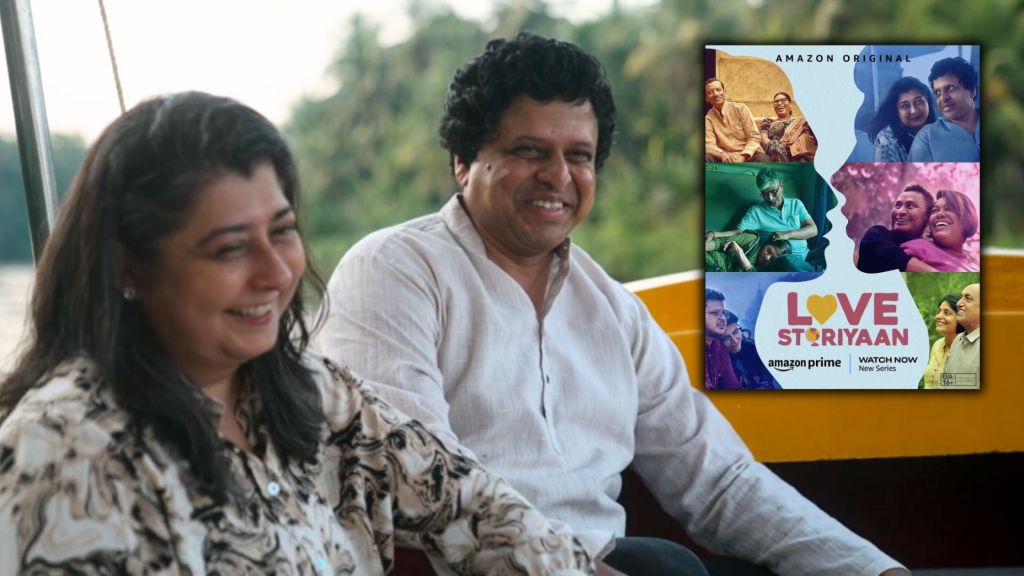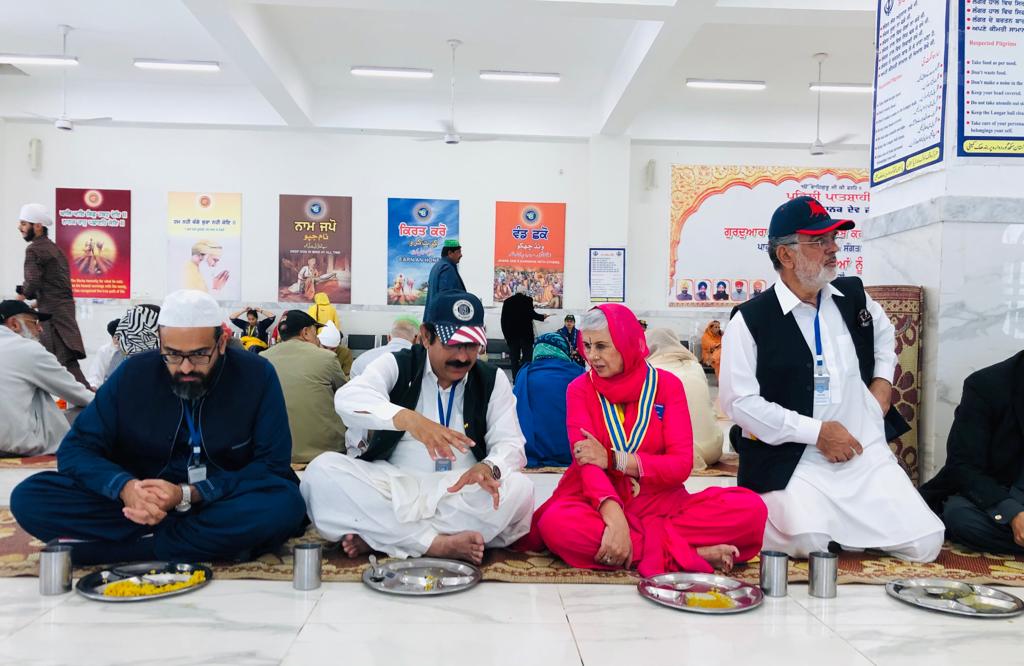As a child growing up in Zambia, Ashish N Soni wore his clothes in a different way, fitted rather than baggy, and noticed what everyone else wore – their shoes, bags, even their cars. When his engineer dad moved to the Middle East in the mid-1980s, Soni moved to Delhi to live with his grandparents and to study science at the British School. With no school uniform, the teenager began experimenting with his look. His father noticed, and brought him a clipping from an NRI newspaper in UAE – it was an ad for National Institute of Fashion Technology (NIFT), which had just been launched in India then.
Soni’s fashion journey, which began in 1990 in a class of just 25 at the new NIFT, would take him around the world and to some of the most prestigious global runways. This year, as he celebrates 25 years of his label, he can look back with some satisfaction at the path he has traversed, and be pragmatic about the future. The world is changing, and he has kept pace.
“Back then, the dean of NIFT was from New York’s Fashion Institute of Technology. Our sketching teacher was from Australia, the draping instructor from UK. The Indian government had not held back on expenses while setting up the NIFT faculty,” the 46-year-old marvels in recollection. After graduation, he interned under a senior designer for a while.
“One day, my batchmate JJ [Valaya] and I were figuring out what to do with our lives. Should we continue with internships or launch our own labels? We decided to flip a coin on it, and that’s how we’re now here,” laughs Soni, sitting at the swanky lounge of Delhi’s DLF Emporio mall where he has a standalone store for his menswear.

He’s come a long way from 1992, when he started his label. Back then, he rented a small barsaati (terrace room) in Lajpat Nagar, hired a tailor and cut the cloth for the garments himself. Within months, he had made enough clothes to be stocked in a posh Greater Kailash-I store. “I was obsessed with jeans. I made hundreds of them, and all sold out in two months,” he looks in the distance as he reminisces.
The 1990s were a time of low-waist loose denims, and Soni added imaginative details including his own name embossed on buttons, besides working hard on the fit for Indian physiques. His father loaned him some money, and that, along with the money he earned on the jeans, went into the making of his first ever runway collection for men, then his second and third, each of which sold very well.
“I feel like I had more money then than I have now,” Soni jokes, attributing his beginner’s luck to a nascent industry. There were fewer fashion designers of note, and the tabloid culture was just beginning to take off in Indian metros. Everywhere the fashion fraternity went, they were photographed.
The journalists who attended fashion shows didn’t know enough about the technical aspects of production, and so designers such as Soni had to practically write their reports for them. It was a learning curve for all. Marketing happened through word of mouth; the sub-culture did its own communication.

Along the way, Soni married Misha Grewal, India’s top ranked squash champion, who later joined a television channel on its sports desk as an anchor. Soni branched out into women’s wear and his younger sister Smita began helping him in his business. It was the turn of the century. And suddenly, there was a boom.
“I guess I was in the right place at the right time,” says Soni of what followed. India’s IT sector took off, and a general economic euphoria led to a heightened interest in the patronization of the arts, including fashion. The Fashion Design Council of India was established to streamline the industry calendar and bring it on par with international seasons.
With fashion weeks came sponsors, and designers could spend lesser time on marketing and more on improving their product. More fashion schools were set up, and established designers had a whole generation of design aspirants to groom and hire. International fashion magazines brought out Indian editions, and in search of content, they sought out the more established names in the industry. Designers became ‘brands’.
It also helped that Soni – unlike other well-known designers – wasn’t only making lehengas and saris for women, but also dresses, suits, shirts and pants. As Indians travelled more, Western silhouettes grew in demand. The new consumer needed something to wear for travel and work, and Ashish Soni clothing, with its simple lines and global appeal, was a total fit. “But I wasn’t content with just retailing in India. I wanted to go international,” he says.
If in 1999 Soni had a small stall at London Fashion Week and a handful of menswear orders, by 2003, he was a regular. In 2004, he started showing his women’s wear in London as well, and in 2005, Fern Mallis, the executive director of the Council of Fashion Designers of America, told him, “I’m taking you to New York Fashion Week.”
But it wasn’t cheap, and Soni needed about Rs 1 crore to fund his American show. That’s when the Ministry of Tourism stepped in, and Soni was made the ambassador for its Incredible India campaign. He was, after all, the first Indian designer to show at NYFW. “The rest of the support came from incredible Indians,” he says, sharing how Indian-Americans helped him ride the tide with their fraternity events and gala dinners in New York in September 2005.
Over the next few years, Soni lived out of a suitcase, travelling across continents, holding almost 12 shows a year at various fashion weeks in Delhi, London and New York. Film stars wore his clothes, and he was frequently in the news, the epitome of the glamorous life. He spent more time at the airport than at home, his family complained.
Finally, his health began to suffer and he was forced to take a break. But old habits die hard. “A few days after a surgery, I flew to Dubai to meet a buyer. My stitches hadn’t even been removed yet,” recounts Soni, whose daughter was born in 2008, seven years after his son. “Let’s move to New York,” he pleaded his wife.
But as things happened, that was never meant to be.

The global economic meltdown that year took Soni’s American dream down with it. In 2009, he shut shop there, and began to focus on his Indian business, starting with his new store at DLF Emporio. But intercontinental travel was still on the cards. In 2010, he was hired by Vanessa G, a luxury fashion label by London-based designer Vanessa Gounden, to be chief design officer. For two years, Soni shuttled between London and Delhi doing his best to manage both ends of his businesses, “but I couldn’t hack it,” he regrets.
He finally decided to move back to India, putting his energies into the customer experience here. He invested in collaborations, such as with Motorola phones and Chivas Regal, and is now working with a bespoke lighting installation brand and a range of perfumes. His garments retail on multi-label platforms online and are available in brick-and-mortar stores in Delhi, Kolkata, Hyderabad, Mumbai and Chennai. He continues to get sizeable orders at international trade shows.
Taking cues from a global movement in fashion, Soni holds only one big show annually, “Summer, because India is perceived as a ‘summer country’ and those clothes can be worn longer through the year.” He has kept pace with the evolving needs of the Indian consumer, a profile that has changed drastically, he says.
While Soni was on his foreign jaunts, various foreign brands arrived on Indian shores, and Indians began experimenting with international labels and styles. But what kept Indian fashion going was the need for customization. “Indians love personal attention, so they kept coming back to Indian designers,” he says.
Even so, Soni has adapted to the new buyer, who is more likely to be from the aspirational middle-class from a smaller town than the uber-rich from the metro, and who is also younger and more fickle: “He doesn’t want to spend an arm and a leg on something he can’t wear more than a season.” Ecommerce has changed the way Indians dress and shop, and designers will have to keep pace with the demand for fast fashion and affordable luxury, he notes.
With a quarter century of fashion behind him, Soni is no doubt an old hand at adapting to the winds of change.









Leave a comment